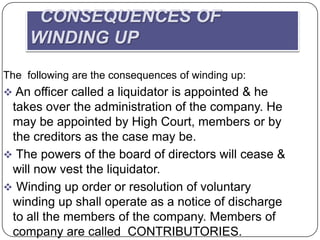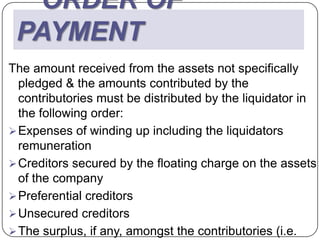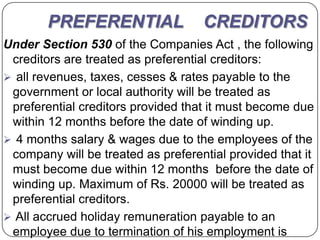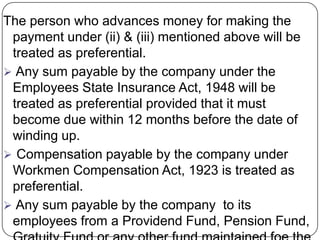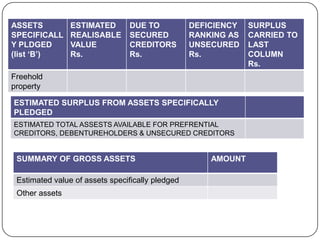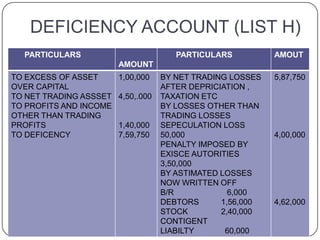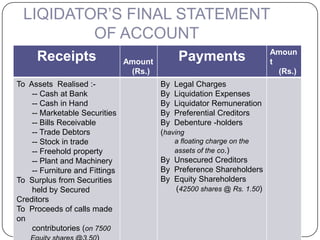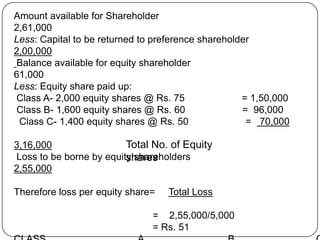Here are the key steps to solve this problem:
1. Prepare a Statement of Affairs showing the estimated realizable value of assets and liabilities.
2. Classify assets as specifically pledged or not specifically pledged. Estimate surplus/deficiency from specifically pledged assets.
3. Estimate total assets available for preferential creditors, debenture holders, and unsecured creditors.
4. List secured, preferential, debenture holder, and unsecured creditors and estimate surplus/deficiency for each class.
5. Distribute estimated surplus in order of priority - secured creditors, preferential creditors, debenture holders, unsecured creditors.
6. Prepare a summary showing distribution of assets and estimated surplus/def
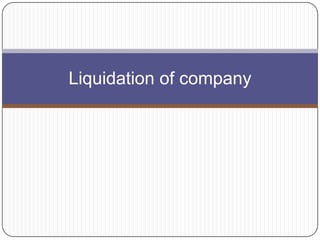
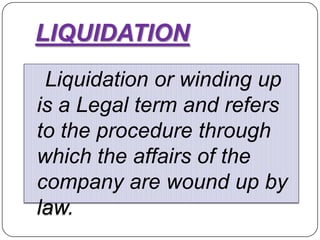


![Section 425 (1) of the companies act
provides that a company can be
liquidated in any of the following three
ways :
COMPULSORY WINDING UP BY THE COURT
VOLUNTARY WINDING UP BY THE MEMBERS
WINDING UP UNDER THE SUPREVISION OF
COURT
Generally the provisions of the Act with respect to
the winding up apply to winding up of a company
whether it be by the court or voluntary or subject
to the supervision of the court [Section 425 (2)]](https://image.slidesharecdn.com/liquidation-121002063302-phpapp01/85/Liquidation-5-320.jpg)
